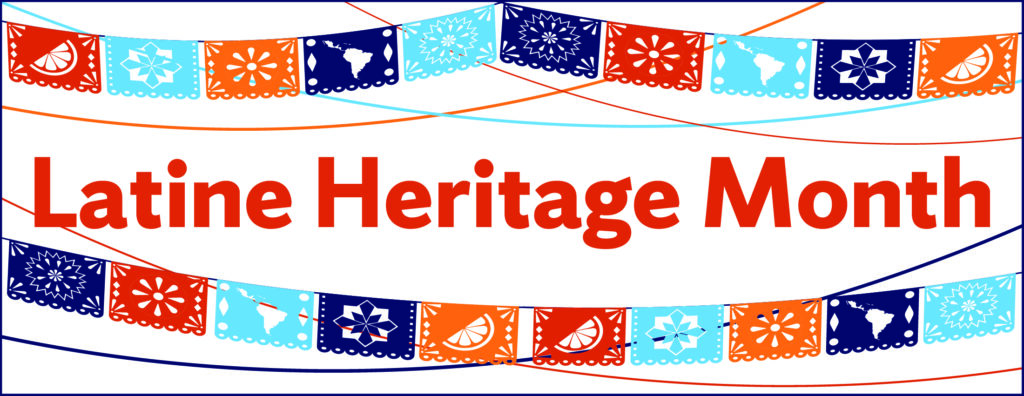Add your feed to SetSticker.com! Promote your sites and attract more customers. It costs only 100 EUROS per YEAR.
Pleasant surprises on every page! Discover new articles, displayed randomly throughout the site. Interesting content, always a click away
Latino core cultural values and their benefits in offering improved medical care. 19 Dec 2023, 1:56 pm
Let’s explore some key Latino core cultural values and their benefits in offering improved medical care.
In today’s increasingly diverse society, it is helpful for healthcare professionals to recognize and appreciate the cultural values of their patients to provide effective and patient-centered care.
When treating Latino patients, understanding their core cultural values can significantly impact their healthcare experience. In this blog, we will explore five essential cultural values among Latino patients and discuss the importance of healthcare providers building rapport and trust with them.
- SimpatÃa: is a core cultural value deeply ingrained in Latino communities. It emphasizes the importance of being warm, understanding, and friendly in social interactions. For healthcare providers, demonstrating simpatÃa means creating a welcoming and trusting environment for their Latino patients. This can be achieved through formal friendliness, active listening, empathy, and a genuine interest in their well-being. By engaging in conversation that goes beyond the medical condition, healthcare providers can build a stronger rapport and foster trust with their patients.
- Respeto: is a fundamental cultural value in Latino communities. It emphasizes the importance of showing consideration and deference towards others, including healthcare professionals. In healthcare settings, demonstrating respect can help Latino patients feel valued and heard. Healthcare providers can promote Respeto by actively listening to patients, using appropriate language and tone, and acknowledging the patient’s background and beliefs.
- Personalismo: is another significant cultural value among Latino patients. It emphasizes personal relationships and connection. This cultural value stresses the need for healthcare providers to establish a strong healthcare provider-patient relationship by showing genuine interest in their patients’ lives and displaying a personal approach to their care. Taking the time to understand their background, family, and cultural context can go a long way in making Latino patients feel valued and understood.
- Familismo: is a core cultural value that emphasizes the importance of family and community among Latinos. In many cases, family members are deeply involved in the healthcare decisions and act as advocates for the patient. It would be helpful if Healthcare providers recognize and involve the family in discussions about the patient’s care, whenever possible. This inclusion not only helps provide comprehensive care but also respects the patient’s cultural values and strengthens their trust in the medical team.

- Fatalismo: is a cultural value often observed among Latino patients and refers to the acceptance of fate or a higher power’s will. Healthcare professionals should be aware of this value and maintain sensitivity when discussing serious illness, prognosis, or end-of-life decisions. Engaging in open and transparent conversations while respecting the patient’s beliefs and values is crucial. Healthcare providers can help address fatalismo by providing education and guidance without disregarding the importance of the patient’s cultural perspective.
Building rapport and trust with Latino patients is essential for healthcare professionals in order to provide high-quality care. By understanding and appreciating their core cultural values such as simpatÃa, respeto, personalismo, familismo, and fatalismo, healthcare providers can create a more compassionate and patient-centered healthcare experience. By incorporating cultural sensitivity and actively engaging with their patients, healthcare providers can foster long-lasting relationships built on trust, thus, leading to better health outcomes.
In conclusion, recognizing and respecting the core cultural values of Latino patients is beneficial for healthcare providers to establish strong connections and build trust. By embracing these values, healthcare professionals can enhance the patient experience, promote effective communication, and ultimately improve health outcomes for their Latino patients.
Let us strive to provide culturally competent and compassionate care for every individual, regardless of their background or cultural heritage.

Join us in one of our CME Medical Spanish & Cultural Awareness courses to learn more!
We look forward to helping you in your journey in learning Medical Spanish, cultural insights, and helping you better connect with your Latino patients!
Día de Los Muertos: Understanding its Importance in Latino Culture for Healthcare Providers 3 Nov 2023, 12:17 am
In the Latino culture, DÃa de Los Muertos, or Day of the Dead, holds great significance and plays a crucial role in honoring and remembering loved ones who have passed away. As healthcare providers, understanding the traditions, beliefs, and values associated with DÃa de Los Muertos can help foster a culturally competent environment, leading to better patient interactions and improved healthcare outcomes. This blog aims to shed light on the importance of DÃa de Los Muertos in the Latino culture and provide valuable insights for healthcare providers seeking to learn about and respect this rich tradition.
- The Origins and Meaning of DÃa de Los Muertos:
DÃa de Los Muertos is a cultural celebration deeply rooted in Latino Indigenous rituals and Catholic traditions. It is observed on November 1st and 2nd each year and serves as a time for families to gather and honor deceased loved ones. Far from being a morbid or sad occasion, DÃa de Los Muertos is a joyous celebration that commemorates the lives of the departed. It emphasizes the belief that the spirits of our loved ones return to join and celebrate with the living.
- Cultural Significance and Customs:
- a) Altars (Ofrendas): One of the most iconic aspects of DÃa de Los Muertos is the creation of elaborate altars adorned with photographs, favorite foods, flowers (especially marigolds), candles, and other meaningful objects. These altars serve as a way to welcome the spirits back to the world of the living.
- b) Calacas and Calaveras: Skeletons, or calacas, and skull-shaped candies, or calaveras, are prevalent symbols during DÃa de Los Muertos. They remind individuals to embrace the cycle of life and death and are often depicted in vibrant colors and artistic designs.
- c) Marigolds: Known as “flor de muerto” or flower of the dead, marigolds hold a special significance during this festival as their vibrant color and strong scent are believed to guide the spirits of the deceased back to their families.

- Healthcare Considerations:
- a) Cultural Sensitivity: Understanding the cultural significance of DÃa de Los Muertos allows healthcare providers to approach conversations about death and loss with sensitivity. Recognizing the importance of this celebration can help establish trust and rapport with Latino patients.
- b) Family-Centered Care: DÃa de Los Muertos is deeply rooted in family traditions, and the importance of familial bonds is emphasized during this time. Recognizing and involving family members in healthcare decisions can enhance patient-centered care for Latino patients.
- c) Grief and Emotional Support: DÃa de Los Muertos can be an emotional time for individuals who have lost loved ones. Offering support and resources for grief counseling or bereavement services can be invaluable in helping patients navigate their emotional journey.

Conclusion:
As healthcare providers, serving a diverse patient population requires an ongoing commitment to cultural competence. Understanding the significance of DÃa de Los Muertos in the Latino culture provides healthcare professionals with a deeper understanding of their patients’ values and beliefs. By acknowledging and respecting the traditions associated with this celebration, healthcare providers can provide more compassionate, patient-centered care, ultimately improving healthcare outcomes for their Latino patients. Embracing cultural diversity and fostering an inclusive environment are essential steps towards achieving equity in healthcare services.
Let’s come together this DÃa de los Muertos to celebrate, uplift, and honor the spirits of our loved ones. Let’s keep this beautiful tradition thriving for generations to come.
Join us in one of our Medical Spanish & Cultural Awareness Courses to learn more cultural insights.
We hope to see you in a future class!
Celebrating Hispanic Heritage Month: A Guide for Healthcare Providers Treating Hispanic Patients 5 Oct 2023, 10:25 pm
Celebrating Hispanic Heritage Month: A Guide for Healthcare Providers Treating Hispanic Patients
Every year, from September 15th to October 15th, the United States celebrates Hispanic Heritage Month, recognizing the rich cultural contributions and diverse backgrounds of Hispanic and Latino communities.
Rios Associates would like to present our healthcare providers with some helpful insights to understanding and appreciating the unique needs and experiences of your Hispanic patients. In honor of Hispanic Heritage Month, we present this guide to help healthcare providers better serve this vibrant and diverse community.
Embrace Cultural Diversity
Hispanic and Latino communities encompass a wide range of cultures, including Mexican, Caribbean, Central and South America. Understanding and appreciating this diversity is the first step toward providing culturally responsive care. We hope you can take some time to learn about the cultural customs, traditions, and beliefs specific to the population of Hispanic patients you serve. This will help you develop a deeper understanding of their individual healthcare needs.
Bilingual Communication
Language can be a significant barrier to healthcare access for many Hispanic patients. It is important for healthcare providers to try to communicate effectively with patients who may have limited English proficiency. Offering bilingual staff or interpreters, or even developing your own knowledge of Spanish, can go a long way in building trust and improving patient outcomes. By speaking in their native language, you are showing your commitment to addressing their unique healthcare needs directly.
Cultivate Trust and Connection
Building trust and establishing a connection with Hispanic patients are fundamental elements of successful healthcare outcomes. Hispanics value personal relationships and appreciate when healthcare providers take the time to understand their unique circumstances. Engage in active listening, show empathy, and display cultural sensitivity during interactions. This will foster a sense of trust and collaboration, allowing for more effective treatment plans and improved patient satisfaction.

Provide Culturally Responsive Care
Understanding cultural factors that influence health can significantly impact the care you provide. Recognize that Hispanic patients may exhibit health-seeking behaviors, beliefs, or preferences influenced by their cultural background. Be aware of cultural nuances, such as the importance of family involvement, religious beliefs, and traditional healing practices. By integrating these aspects into your treatment plans, you can provide more effective and patient-centered care.
Community Connections
Hispanic communities often have strong bonds and cultural support systems that play an integral role in health and wellness. As a healthcare provider, it is valuable to establish connections with community organizations, religious leaders, and cultural centers. These connections can facilitate better communication, increase outreach efforts, and enhance patient referrals. Collaborating with local resources can also help bridge healthcare gaps and provide a more holistic approach to patient care.
Health Education and Prevention
Health education is a vital component of healthcare for Hispanic patients. Providing culturally sensitive and targeted health education materials can empower Hispanic patients to take control of their health. It is essential to address prevalent health conditions in the Hispanic community, such as diabetes, obesity, and cardiovascular disease. By tailoring your educational materials and outreach efforts to the specific needs of Hispanic patients, you can help prevent and manage these conditions more effectively.
As we celebrate Hispanic Heritage Month, let us embrace the opportunity to enhance our understanding and appreciation of the Hispanic community. By recognizing and incorporating the cultural needs of our Hispanic patients, we can foster trust, improve patient outcomes, and ensure that every person receives the high-quality care they deserve. Together, let’s make a positive impact on the health and well-being of Hispanic patients during this special month and beyond.
We hope you have found this information helpful!
If you are interested in learning more, please join us in one of our CME Medical Spanish & Cultural Awareness courses!

Connecting with your Latino patients and their family 30 Dec 2021, 7:45 pm
Latino patients and family
Let’s look at general aspects to take into account concerning the Latino patient as opposed to the Anglo patient.Â
Naturally, we are well aware that each individual is different, and we wish to avoid over-generalization. However, cultural differences simply do exist and are a fact of life, and it helps to be aware of them to avoid unwittingly offending a patient.
Within the Latino culture the extended family plays an extremely important role and the family tends to be very close-knit. A patient may often be accompanied by other family members for moral support, due to cariño (affection), or merely out of habit. The “Anglo†healthcare professional may feel somewhat overwhelmed by this, perhaps even a bit frustrated, but there is no need to feel so. It is fairly customary.
Latinos also tend to be more expressive with feelings, hand gestures, and body movements, in general, often touching one other in an affectionate or soothing manner, mentioning one another’s names frequently within a conversation (a lovely personal touch), and/or often standing together at a much closer proximity than, for example, Anglo speakers would without feeling awkward or uncomfortable.
The Spanish language, which is reflective of the Latino culture and vice versa, also observes more formal courtesies than does the mainstream culture in the United States. When meeting, greeting, interviewing, and leave-taking within the Hispanic culture, it is extremely important, customary, and courteous to shake hands. Formalities and courtesies are stressed, while political correctness is not a recognized concept. Although hand shaking (especially if there are several people in the room) appears to be a time-consuming gesture, especially when time is limited, in the long run it will be faster and more efficient to do so. The consult will run more smoothly as some rapport will have been established. Â

During Covid-19 and any other pandemic, obviously, no handshaking takes place. This can be replaced with a fist bump, elbow bump, a “distanced, pretend handshakeâ€, etc. and is, as such, recommended to establish empathy.
Latino children are generally taught not to question others, especially people in authority because this is considered impolite and disrespectful. This attitude may carry over into adulthood. In the medical setting, it is not typical to ask questions or clarify points, as it is for mainstream U.S. patients. Thus, a healthcare professional may want to explain or emphasize some points a bit more or make sure all the patient’s questions are answered. Remember, great respect is shown for priests, healthcare professionals, and the elderly. Out of respect for the healthcare providers, many patients may tend to agree with everything they say, so as not to “challenge†their authority and/or to avoid wasting the doctors’ or nurses’ valuable time.
Clearly, sensitivity to and awareness of cultural dynamics can greatly improve the relationship between the healthcare provider and the patient.
Investing in the beginning with your Latino patients is key! That first interaction with your patient is a great way to build trust, which, in Spanish is called “confianza”.Â
In order to establish a stronger, trusting healthcare provider/patient relationship with Latinos, the following is recommended:
Attempt to speak some courtesy phrases in Spanish. A little bit goes a long way!
Let’s have a brief Spanish lesson here:
Buenos dÃas- Good morning
Buenas tardes- Good afternoonÂ
Buenas noches- Good evening.
Soy el doctor(a) Jones – I am Dr. Jones.
Mucho gusto- Nice to meet you.
¿Cómo está?- How are you?
Use formal address:Â
Señor- Mr.
Señora – Mrs.
Try to pronounce patients’ names and surnames correctly. Â
Don’t be shy to ask how to pronounce our names. That shows that you care and are interested.

Smile, wave and speak in a warm and upbeat tone of voice (tone of voice and body language are powerful and meaningful tools).
Inquire about family or engage in small talk. This shows a more personal touch and not the “get down to business†approach, which, is considered rather rude in the Latino culture. Taking the time to chat and connect on a personal level will help your patient feel more relaxed and willing to participate.Â
The above tips are a great way to begin building rapport with your Latino patients!
Join us in one of our Medical Spanish & Cultural Competency courses for more key phrases and tips!
Happy Thanksgiving! How the Latino population celebrates Thanksgiving 23 Nov 2021, 2:46 pm
Latino population living in the USÂ
According to officially announced U.S. Census Bureau population estimates, the Latino population in the United States hit a record of over 60.47 million in 2019, up 930,000 from the previous year and up from 50.7 million in 2010.Â
Latinos continue to play a crucial role in the country’s overall demographic picture. Between 2010 and 2019, the Latino population of the United States grew from 16 percent to 18 percent. During this time, Latinos accounted for over half (52%) of all population increase in the United States. They are the second-largest ethnic or racial group in the country, after white non-Hispanics.
With 4.9 million Hispanics in 2019, Los Angeles County has more Hispanics than any other county in the United States. Harris County, Texas (2.1 million) and Miami-Dade County, Florida (2.1 million) had the next-largest Hispanic population (1.9 million). In 2019, 11 counties had a population of more than a million Hispanics. Maricopa County, Arizona; Cook County, Illinois; and Riverside County, California were among them. In 2019, Hispanics made up at least half of the population in 104 U.S. counties.

Four students make selfies near campus
How does the Latino population celebrate Thanksgiving?
As you know, Thanksgiving is widely associated with mashed potatoes, turkey, cranberry sauce, and a variety of other classic American meals.Â
Latinos, on the other hand, may have a slightly different Thanksgiving feast and celebration. Thanksgiving is often called “Dia de Acción de Gracias” or “Dia de Dar Gracias.†However, the name and activities are frequently a tailored combination of Hispanic and American traditions among Latinos.
Even though Thanksgiving is not observed in Latin America, many Hispanics in the United States have a unique affinity for the holiday and the day of thankfulness. Hispanics frequently incorporate traditional foods from their home cultures into their cooking.
Regardless of nationality, there are a few common themes that most Latino people follow. Instead of conventional stuffing, most Hispanics fill their turkeys (pavo, guajolote {Northern Mexico}, guanajo {Cuba} ) with additional protein. Any form of meat can be used as an added protein, although chorizo, pig pieces, bacon, or ground beef are popular choices. Rice is a staple dish for Hispanics at every meal, and it may be found in various forms, including yellow rice, white rice, and even as a dessert, arroz con leche. Music and dancing usually take the place of football games and parades.
In essence, Hispanic Thanksgiving celebrations are like traditional American festivals. Hispanic Thanksgivings simply merge Latino and American customs, as seen by Spanish/Latino cuisine and festivals here in the United States.

Turkey on the table for Thanksgiving Day
Tips for your Latino Patients on How to celebrate Thanksgiving during COVID and some suggestions in Spanish:
Since many will be celebrating with family and friends, you may want to gently remind your Latino patients of the CDC recommendations (Please find a simplified Spanish version below each one):
Protect those not yet eligible for vaccination such as young children by getting yourself and other eligible people around them vaccinated.
Vacúnese (Es importante vacunarse) y procure que se vacunen todas las personas elegibles, para proteger a quienes todavÃa no son elegibles para vacunarse, como los niños pequeños.
*Wear well-fitting masks over your nose and mouth if you are in public indoor settings.
Use (Necesita usar) mascarillas (cubrebocas/tapabocas) bien ajustados sobre la nariz y la boca en lugares públicos cerrados.
*Outdoors is safer than indoors.
Es mejor celebrar al aire libre que en lugares cerrados.
*Avoid crowded, poorly ventilated spaces.
Evite (Es mejor evitar) los espacios muy llenos y con mala ventilación.
*If you are sick or have symptoms, don’t host, or attend a gathering.
Si está enfermo o tiene sÃntomas, no tenga ni vaya a ninguna reunión. (Es muy importante no tener ni ir a reuniones.)
*Get tested if you have symptoms of COVID-19 or have close contact with someone  who has COVID-19.
Si tiene contacto con una persona con COVID-19 o si tiene sÃntomas, hágase (es muy importante hacerse) una prueba de detección.
Â
And lastly, remind your Latino patients that by following these guidelines everyone can enjoy a safe holiday, and protect the health of family and friends.
 ¡Feliz DÃa de Acción de Gracias!
Warm regards from RÃos Associates!
Spanish and its impact on healthcare — background, facts, and the future of healthcare by considering this population 20 Nov 2021, 12:30 am
Spanish language and the Hispanic/Latino background in the US
Populations of the United States who used to be described as being of Spanish ancestry have over time come to be referred to as “Hispanic” or “Latino†and come from various racial, socio-economic, and historical origins. Both terms now apply to populations of Spanish-speaking nations of the Americas, as well. We must remember that geographically, America consists of North, Central, and South America. North America is composed of Canada, the United States, and Mexico, also known as the United States of Mexico. Central America consists of Belize (English is the official language), Guatemala, Honduras, El Salvador, Nicaragua, Costa Rica, and Panama. South America is comprised of Argentina, Bolivia, Brazil, Chile, Colombia, Ecuador, Paraguay, Peru, Uruguay, and Venezuela. Some consider Guyana and Suriname, as well. Guyana’s inhabitants speak English, a consequence of British colonization, while the official language of Suriname is Dutch. In Brazil, Portuguese is the official language. All the above countries, except those otherwise indicated, speak Spanish. Â
In case you were also wondering, Cuba, Puerto Rico, the Dominican Republic, and Haiti all form part of the Caribbean. (Haiti is French speaking).
Interestingly enough, Hispanics/Latinos were the first to introduce western culture to North America and the regions that would ultimately become part of the United States. During the discovery and colonization of these countries, Hispanic people established institutions and ideas that have been known as “American.”Â
The Hispanics/Latinos contributed to not only modern technology, such as those required for ranching, farming, and mining, but also many ideals and viewpoints prevalent in western intellectual culture.

Learn Spanish Language Online Education Concept
Latinos/Hispanos living in the US
In the United States, Hispanics make up the most significant minority. In 2019, the United States had approximately 60.5 million Hispanic inhabitants. According to projections, the population will reach 111.22 million by 2060, making a substantial U.S. population growth.
Since Latinos represent a large majority in this country, they also require vital services and one of the most important is healthcare. However, one of the main obstacles when requiring medical attention is often the language. Other barriers may also include cultural limitations, a lack of access to preventative treatment, and a lack of health insurance are all variables that influence Hispanic/Latino health. According to the Centers for Disease Control and Prevention, heart disease, cancer, accidental injuries, accidents, stroke, and diabetes are among the leading causes of sickness and mortality among Hispanics/Latinos. They face additional health concerns and risk factors, such as, asthma, COPD, malnutrition, liver disease and suicide.
We here at RÃos Associates strive to bridge this gap and feel we must take into consideration the benefits on both sides of the relationship.Â
As a healthcare professional, by speaking Medical Spanish, being Culturally Sensitive, and establishing a closer relationship with your Latino patients, you will be able to:Â
- form a sense of trust with your Spanish-only speaking patient.
- build a good rapport with first-time patients, thus, encouraging them to return for frequent well-checks and encourage preventive care and a healthy lifestyle.
- help patients feel more comfortable, safe, less anxious, and more willing to comply with treatment.
Our objective is to teach medical Spanish and Cultural Competency to health care providers to better serve the Latino community.Â
Our various programs teach you to communicate with your Spanish-speaking patients to form strong clinician–patient rapport. You learn a standardized universal Spanish. Your Latino patients will come from a variety of countries, education levels, socioeconomic backgrounds, and origins (whether urban or rural). Some may be from indigenous groups for whom Spanish is also a second language. The point is that their Spanish accents, some vocabulary, expressions, and cultural traits will differ; yet you will be able to understand the essential, salient aspects of what they express.
It is important to remember that if you smile and say as much as you can in Spanish — even if it is only introducing yourself—most of your Spanish-speaking patients will be relieved and impressed that you are attempting to learn and use their language.

Patient with her doctor
Rios Associates Introduces 4th Edition of our Complete Medical Spanish Book 12 Apr 2021, 5:11 pm

Rios Associates is pleased to announce the release of our 4th edition of our McGraw Hill’s Complete Medical Spanish book and audio USB.
We would like to thank all our past participants of our CME Medical Spanish & Cultural Competency Courses and to those of you who have offered valuable feedback for our book!
We have listened to your feedback and have included additional material specific to your specialty areas.
In our 4th edition you will find:
1) Supplemental components to our Cultural Competency sections, addressing culture bound syndromes, natural healers that are common in the Latino culture and general cultural competency tips.
2) Expanded information concerning: family and emergency medicine, while adding full sections on: women’s health, mental health, sports medicine, physical therapy, speech therapy and of course, pandemics, specifically, Covid-19.
3) We have also added information concerning Behavioral problems in children, Autism, Bipolar Disorder and ADHD, as well as the OASIS, MoCa, ACE and GAD-7 questionnaires.
We aspire to bridge the language and cultural gap between you and your Spanish speaking patients. You will find tips on how to build rapport with your Latino patients and communicate with them in a culturally sensitive manner, while learning both correct, professional Spanish, and layperson’s terms.
We look forward to utilizing our new 4th edition Complete Medical Spanish book in our upcoming CME Medical Spanish and Cultural Competency Courses.
Our book is included in all our trainings and remember you can always obtain up to 45 category 1 AMA CME credits with our book and corresponding audio USB and exams.
Our book is available for purchase at the shop section of our website:
www.riosassociates.com/shop/
You may also find our schedule of classes for all of our CME Medical Spanish & Cultural Competency Courses at:
www.riosassociates.com/schedule-registration/
If you would like a description of each course, for your convenience we are providing a link to our current CME Medical Spanish & Cultural Competency courses:
CME Medical Spanish and Cultural Competency Virtual Trainings
www.riosassociates.com/virtual-training-session/
CME Medical Spanish Personalized One-on-One Classes (Webinars)
www.riosassociates.com/personalized-one-on-one-training/
CME CME Medical Spanish Self-Study Program
www.riosassociates.com/self-study-cme/
Please feel free to contact us if you have any questions! We are always happy to hear from you and help you in your journey of learning medical Spanish!
¡CuÃdense mucho!
Warm regards from Rios Associates
Rios Associates
520-907-3318
3729 N. Bay Horse Loop
Tucson, AZ. 85719
tamara.rios@medspanish.org
www.riosassociates.com
A Quick Lesson on False Cognates! 18 Sep 2020, 11:47 am
As we mentioned in our previous blog, there are many medical terms whose roots are the same in English as in Spanish since they are derived from Latin and Greek. Â These are referred to as cognates.
However, there are other misleading terms which sound alike, but alas, do not have the same meaning. Thus, they are referred to as FALSE COGNATES.
Please have a look at the following and either memorize, enjoy, or both!
Â
| embarrassed | = avergonzado(a) / apenado(a) | ≠embarazada (pregnant) |
| to stretch | = extender/estirar/forzar | ≠estrechar (to make narrower) |
| to rest | = descansar | ≠restar (to subtract, deduct) |
| to record | = anotar, registrar | ≠recordar (to remember, remind) |
| intoxicated | =  ebrio | ≠intoxicado (food poisoning, drunk) |
| constipation | =  estreñimiento | ≠constipación (congestion) |
| injury | =  lesión, herida, daño | ≠injuria (insult, offence) |
| parent | = progenitor/padre | ≠pariente (relative) |
| discharge from hospital | = dar de alta | ≠descargar (download)
# vaginal discharge    = desecho/flujo |
How many of the above have you mistakenly used? And how many of those will now be emblazoned in your mind for eternity?
There are several more lists of false cognates and of course, cognates, which, you can find in our Complete Medical Spanish book and audio USB.
You may find our book and audio USB on our shop section of our website: www.riosassociates.com/shop/
For those of you planning to participate in any of our CME Medical Spanish and Cultural Competency Classes, you will have the opportunity to learn more cognates and false cognates, as well as, a wealth of Medical Spanish vocabulary, easily explained Spanish grammar and cultural competency tips that will assist you in better communicating with your Latino patients.
Even if you are just beginning your journey in Spanish, saying a few words to your Latino patients, will help you build a rapport and connect with us.
A little bit goes a long way and we are here to help you in that process!
You may find our schedule of classes for all our CME Medical Spanish & Cultural Competency Courses at www.riosassociates.com/schedule-registration/
If you would like a description of each course, for your convenience we are providing a link to our CME Medical Spanish & Cultural Competency courses:
Live CME Medical Spanish and Cultural Competency Conferences in the U.S.
www.riosassociates.com/us-courses/
Live CME Medical Spanish and Cultural Competency Conferences in Mexico
www.riosassociates.com/mexico-courses/
CME Medical Spanish and Cultural Competency Onsite Courses
www.riosassociates.com/on-site-courses/
CME Medical Spanish and Cultural Competency Virtual Trainings
www.riosassociates.com/virtual-training-session/
CME Medical Spanish Personalized One-on-One Classes (Webinars)
www.riosassociates.com/personalized-one-on-one-training/
CME Medical Spanish Self-Study Program
www.riosassociates.com/self-study-cme/
CuÃdense mucho…Stay safe and healthy!
Warm regards from Rios Associates
A Quick Lesson On Cognates! 14 Sep 2020, 4:35 pm
If you have ever studied Spanish or any other language, you might have heard of the grammar term “Cognateâ€.
If you are just beginning your journey in learning medical Spanish, you might wonder what a cognate is.
Here is a quick lesson on cognates!
There are many terms whose roots sound the same in English as in Spanish, these are referred to as cognates.
You have probably already noticed how close many medical terms are in both English and Spanish, as their roots generally are derived from Latin or Greek.
This is wonderful news, as you can easily add new medical Spanish terms to your already existing vocabulary!
Let’s take a close look at some commonly used medical terms in English and Spanish below.
Words that end in “TION†in English will end in “CIÓNâ€, (pronounced SEE-OWN), in Spanish.
Some further good news is, if a word ends in “CIÓN†in Spanish it is generally feminine, meaning you simply use the article “Laâ€.
Some examples:
Recuperation – La recuperación
Laceration – La laceración
Irritation – La Irritación
Complication – La complicación
Inflammation – La inflamación
Pretty easy right?
Let’s take a closer look at some other commonly used medical terms in English and Spanish that fall under the cognate category.
Words that end in “ITIS†in English will end in “ITIS†(pronounced, EAT-EAS) in Spanish and the bonus is they are also feminine!
Some examples:
Hepatitis – La hepatitis
Arthritis – La artritis
Colitis – La colitis
Bursitis – La bursitis
Gastritis – La gastritis
We have one more to share with you!
Words that end in “OLOGIST†in English will end in “OLOGOâ€, (pronounced, OH-LOH-GO/GA) in Spanish.
It is important to be mindful that the article will depend on whether the specialist is male or female.
Some examples:
The cardiologist – El/La cardiólogo(a)
The neurologist – El/La neurólogo(a)
The dermatologist – El dermatólogo(a)
The urologist – El/La urólogo(a)
There are several more lists of cognates, which, you can find in our Complete Medical Spanish book and audio USB.
You may find our book and audio USB on our shop section of our website: www.riosassociates.com/shop/
For those of you planning on participating in any of our CME Medical Spanish and Cultural Competency Classes, you will have the opportunity to learn more cognates, as well as, plenty of other medical Spanish vocabulary, Spanish grammar and cultural competency tips that will assist you in better communicating with your Latino patients.
Even if you are just beginning your journey in medical Spanish, by saying a few words in Spanish to your Latino patients, will help you build that rapport and connect with us.
A little bit goes a long way and we are here to help you in that process!
You may find our schedule of classes for all of our CME Medical Spanish & Cultural Competency Courses at www.riosassociates.com/schedule-registration/
If you would like a description of each course, for your convenience we are providing a link to our CME Medical Spanish & Cultural Competency courses:
Live CME Medical Spanish and Cultural Competency Conferences in the U.S.
www.riosassociates.com/us-courses/
Live CME Medical Spanish and Cultural Competency Conferences in Mexico
www.riosassociates.com/mexico-courses/
CME Medical Spanish and Cultural Competency On-Site Courses
www.riosassociates.com/on-site-courses/
CME Medical Spanish and Cultural Competency Virtual Trainings
www.riosassociates.com/virtual-training-session/
CME Medical Spanish Personalized One-on-One Classes (Webinars)
www.riosassociates.com/personalized-one-on-one-training/
CME CME Medical Spanish Self-Study Program
www.riosassociates.com/self-study-cme/
Cuidense mucho…Stay safe and healthy!
Warm regards from Rios Associates
Culturally Sensitive Tips On How To Communicate With Your Latino Patients About COVID-19 20 Aug 2020, 7:00 am
Since the start of the pandemic, data has shown that COVID-19 has disproportionately affected the Latino population.
The pandemic has created great fear and anxiety in Latino families as many face language barriers and limited access to health care and health information.
We would like to address how the COVID-19 pandemic is deeply impacting the U.S Latino community and what we can do to help. The COVID-19 pandemic has particularly affected the Latino community at a remarkably high rate.
Our mission at Rios Associates has always been to help you better serve your Latino patients and our goal in this blog is to provide you with the information and key cultural tips you need to better understand, communicate and most importantly support your Latino patients’ needs during these challenging times.
What explains the COVID-19 inequalities among Latinos?
- Many Latinos live in close quarters, often multiple families to a house or farmworkers crowded into a barracks-style room, where social distancing and self-isolation are impossible.
- We often perform jobs that require interaction with the public, in food service, transportation and delivery; or in meatpacking plants which have emerged as major hot spots.
- We generally use public transportation.
- We have higher rates of underlying conditions, such as diabetes, asthma, hypertension and obesity.
- We are more likely uninsured, which, is an impediment to accessing COVID-19 testing and treatment services
- There is a lack of information or a great deal of misinformation.
- There are also language and cultural barriers, as well as, income and Immigration issues.
From a cultural stance, it is important to note that the Latino culture is very family oriented and as we visit one another, we display extremely open and exuberant physical affection.
Therefore, when giving Latino patients social distancing recommendations, it is helpful to lament and apologize for having to enforce these restrictions. This confirms empathy and understanding as to how difficult it is culturally, to not be able to visit family and friends or to show physical affection through our common and expected, handshakes, kissing and hugging, which, are all very common greetings. This may seem profuse to the non-Latino population, however, the constant handshaking, kissing on the check and hugging is all part of our daily interactions.
Another important factor to acknowledge is our conversations are generally loud, rapid, and adorned with gestures and touching. Thus, it can be emotionally challenging to refrain from what is so ingrained in our culture.
How can we help in a culturally sensitive manner that resonates with Latino patients?
Here are some supportive ways to offer recommendations to your Latino patient population that would resonate and be well received:
- Preface recommendations with “It is very importantâ€, in Spanish “es muy importante†in a firm, but friendly tone. This signals to us, we should pay attention, focus, and seriously follow the recommendations.
- Lament, or apologize for enforcing the social distancing recommendations. This signals to us a caring empathy toward us and our culture. When discussing the recommended social distance of 6 feet, please also try to use the metric system of 2 meters (6 ft 6â€), which most of us grew up with in Latin America.
- Acknowledge the importance of touch and proximity in the Latino culture and how that can be emotionally challenging. It can be jarring and distressful to refrain from something so culturally embedded and expected, which, in turn, can have emotional and mental health repercussions.
- Emphasize the importance of not only protecting oneself, but the entire family, particularly, our elderly family members. Latinos tend to react more positively when we hear how actions affect our family, as a whole.
- Elicit your patient’s perspective on COVID-19 and encourage us to ask questions and address any concerns we may have.
- With hope of a vaccine on the horizon, it is worth having that conversation with your Latino patients and addressing any questions and concerns we may have, while, reassuring and emphasizing the importance of vaccines in general.
- If there are handouts or brochures, highlight areas you would like to emphasize or use fotonovelas, if available.
-
- For those of you not familiar with a fotonovela, it is a traditional print medium found in Latin America similar to the format of a comic book, typically depicting a simple, dramatic story (or soap opera) containing a moral message.
- A major challenge in health education and behavior intervention is reaching people with language or cross-cultural communication barriers or low literacy skills. An innovative, effective approach for healthcare providers to reach this population and change behaviors is through the use of the fotonovelas. It truly is an excellent educational tool and has proven a successful means of communicating health information and other social-cultural issues in a culturally appropriate and sensitive manner.
- If they are not readily available, you can always highlight and emphasize areas of the after-visit summary, brochures, or any other material provided.
- Finally, if you are planning to offer telemedicine as an option, please explain what it is, how it works, as well as, address any questions or concerns we may have. Not all Latinos have accessibility to the internet, thus, it might feel like an overwhelming and stressful option. That being said, it would be helpful to ask if we have a family member that can help connect and participate during the visit.
The above recommendations are a good start to connecting with your Latino patients and providing culturally sensitive and appropriate COVID-10 information.
For those of you planning on participating or interested in any of our CME Medical Spanish and Cultural Competency Classes, you will have the opportunity to learn specific COVID-19 related language and cultural tips, as well as, additional medical Spanish vocabulary, Spanish grammar and cultural competency tips that will assist you in better communicating with your Latino patients.
We hope this has been helpful in treating your Latino patients during this arduous time.
Please let us know if you have any comments or specifics to add.
Cuidense mucho…Stay safe and healthy!
Warm regards from Rios Associates